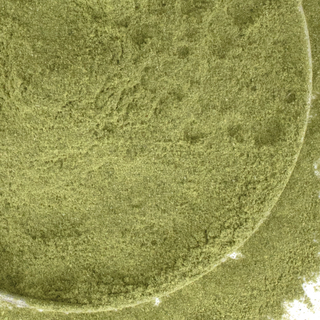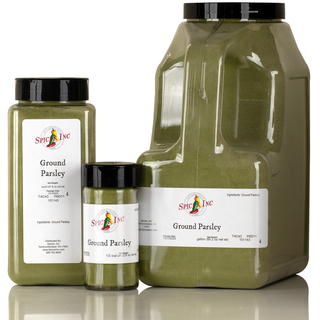Ground Parsley




Ground Parsley
Ground Parsley, Petroselinum crispum, is a bright green, finely milled powder made from dried parsley leaves. Parsley is native to the Mediterranean region. It is related to other popular spices and herbs like dill, chervil, anise, fennel, cumin, caraway, and coriander. It is also referred to as parsley ground, dried ground parsley, or petrushka herb powder.
The term “Petrushka” and parsley’s botanical name, Petroselinum, are derived from petros, the Greek word for “rock”. This is because parsley tends to grow in rocky areas and on cliffs.
Ground Parsley is often sought after by:
- seasoning companies;
- butchers;
- sauce, snack food, and beverage manufacturers;
- independent spice shops; and
- olive oil shops
We also have Dried Parsley and Organic Parsley available.
1/4 teaspoon of Ground Parsley is roughly equivalent to 1 teaspoon of Dried Parsley.
Flavor Profile
Ground Parsley is punchy and surprisingly peppery and mineral-y. The volatile oils have concentrated and are fully exposed in the powder, so they react immediately on the palate. The flavor fades quickly.
How To Use
Ground Parsley is best used as a finishing product, since prolonged exposure to heat will cause the volatile oils to evaporate. Use as a final garnish to toss over roasts, chicken, vegetables, cheeses, cold dips like hummus, or to blend into dressings, marinades, beverages, and seasoned oils.
Ground Parsley pairs well with garlic, lemon, orange, fennel, anise, black pepper, seafood, shallots, beans, chicken, mild cheese, olive oil, butter, lentils, and potatoes.
| Also Called | Parsley ground, dried ground parsley, or petrushka herb powder |
| Species | Petroselinum crispum |
| Ingredients | Dried, ground parsley leaf |
| Flavor Profile | Punchy, bitter, peppery, minerally, fades quickly |
| Oil content | .06-.1% |
| Recommended Uses | Finish meats, vegetables, seafood, chicken, tofu, add to dips, sauces, beverages, cheeses, seasoned oils |
| Cuisine | Global |
| How To Store | Airtight container in a cool, dark place |
| Shelf Life | 6-12 months |
| Country of Origin | Egypt |
Nutrition Facts
Serving Size1 tsp
Amount Per Serving
Calories7
% Daily Value*
Total Fat0g0%
Saturated Fat0g0%
Trans Fat0g
Polyunsaturated Fat0g
Monounsaturated Fat0g
Cholesterol0mg0%
Sodium10.5mg0%
Total Carbohydrate1.2g0%
Dietary Fiber0.6g3%
Total Sugars0.2g
Added Sugars0g0%
Sugar Alcohol0.0g
Protein0.6g1%
Vitamin D0mcg0%
Calcium27mg2%
Iron1mg3%
Potassium63mg1%
*The % Daily Value (DV) tells you how much a nutrient in a serving of food contributes to a daily diet. 2,000 calories a day is used for general nutrition advice. These values were calculated and therefore are approximate. For more accuracy, testing is advised.
